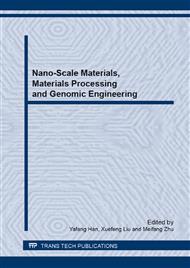p.443
p.449
p.455
p.461
p.466
p.471
p.477
p.489
p.495
Effect of CO2 on Anti-Corrosion Property of a Polyurea Coating Modified with Organosilicone
Abstract:
The corrosion mechanism of organic silicon modified polyurea composite coating under different CO2 partial pressures was studied using high-temperature autoclave, combined with scanning electron microscopy (SEM), adhesion tests and electrochemical impedance spectroscopy (EIS) technology. The experimental results showed that: there was no corrosion product formed on the surface of coating sample after high-temperature high-pressure corrosion test, and with the increasing of CO2 partial pressure, the coating adhesion and impedance values decline increases. Moreover CO2 partial pressure increases accelerated the failure process of polyurea composite coating system.
Info:
Periodical:
Pages:
466-470
Citation:
Online since:
April 2014
Authors:
Keywords:
Price:
Сopyright:
© 2014 Trans Tech Publications Ltd. All Rights Reserved
Share:
Citation:


